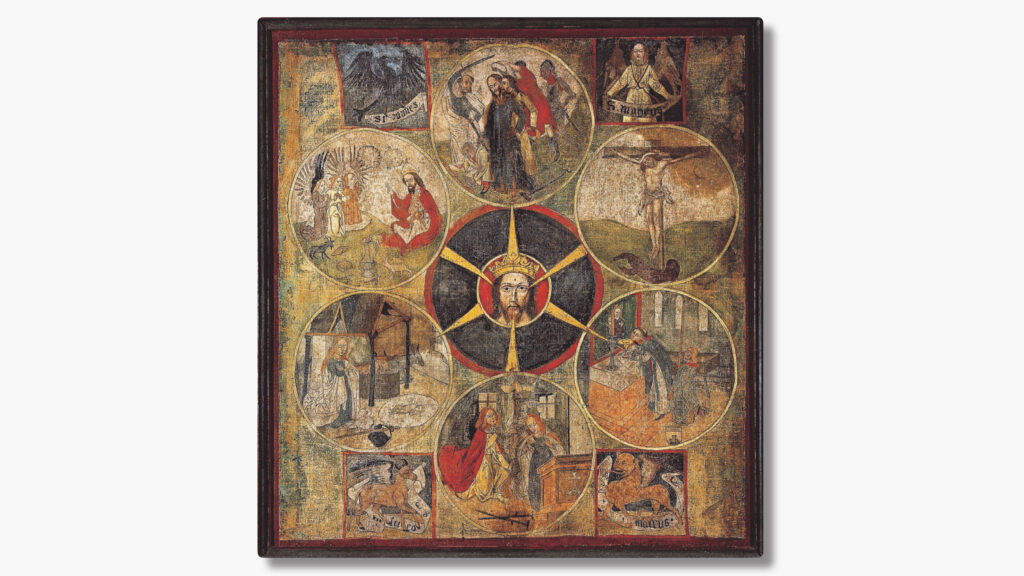These reflections are based on a “mandala” created in the 15th Century based on the insights of Saint Nicolas of Flue (1417-1487), who was canonized shortly after the Second World War and proclaimed Patron Saint of Peace.
The images of the mandala are sequenced according to the pleas of the “Our Father.” Its structure is that of a wheel which symbolizes the passing of time, and the history of the world and of humanity.
God, the Unmoved Mover, is the center of the wheel and at the same time takes part in the different scenes. Through God’s action, history of the world becomes that of salvation. However, humans are not just the “objects” of salvation. They take active part in salvation, as “subjects,” with their acts of mercy.
Just 70 years ago, after the horrific experiences of the First and Second World Wars, the United Nations adopted and proclaimed the Universal Declaration of Human Rights, with the hope that this action would prevent such horrors from ever occurring again. Mercy and human rights are interdependent. Without the recognition of the rights of humanity, mercy can be humiliating.
Without mercy, rights can be loveless. Yet, both are rooted in human dignity which is unconditional and inalienable for each and every human being. When the respect of human rights and works of mercy go hand in hand, then history becomes that of salvation.
This reflection booklet looks beyond the original scenes of the mandala, at sisters and brothers of our time, who work together with Franciscans International to bring mercy and rights together in their Franciscan mission.
Let us now become one with them in prayer so that “God’s kingdom come, and His will be done on earth as it is in heaven.”
The reflections are available in English, French, German, Italian, and Spanish.

